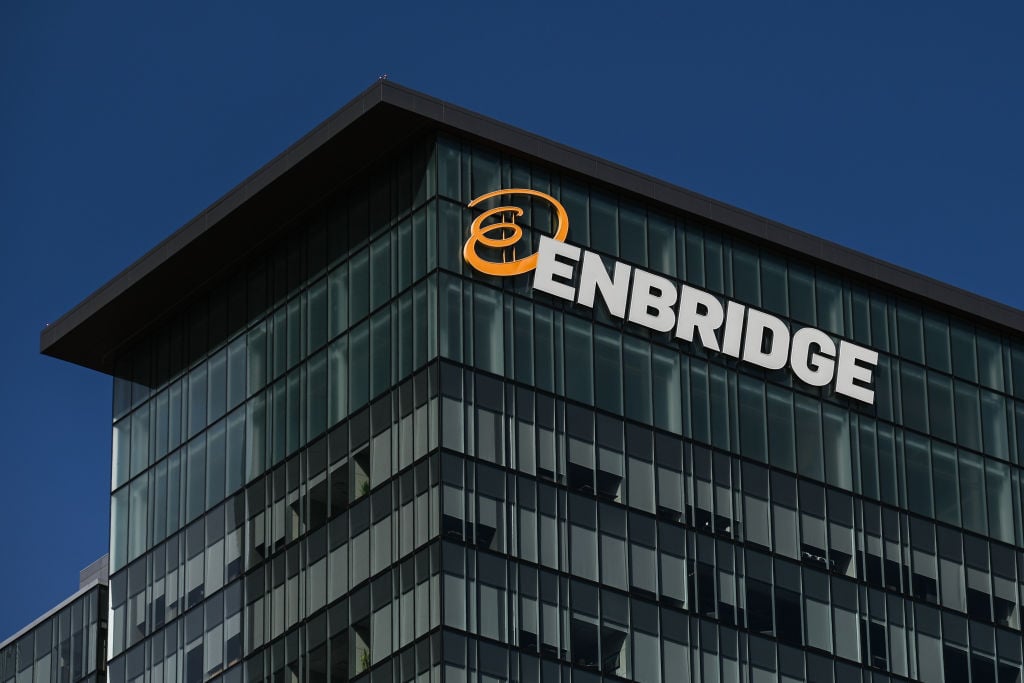Enbridge (ENB 1.89%) is the largest energy infrastructure company in North America. It's also among the most complex after it created and acquired several master limited partnerships and other entities to hold some of its assets over the years. That growing complexity is increasing the uncertainty about what the future holds for the franchise and has weighed on the valuation of Enbridge, as well as its various public entities, over the past year.
It's a problem the company could address by undertaking a massive roll-up transaction to combine most of these subsidiaries into one large-scale entity. Doing so could help lift the weight holding the franchise down by reducing redundancy and costs while providing investors with a clear vision of the future.

Image source: Getty Images.
A far-flung energy franchise
Enbridge currently holds stakes in three MLPs. Its namesake, Enbridge Energy Partners (EEP +0.00%), is primarily an oil pipeline company. Spectra Energy Partners (SEP +0.00%), meanwhile, is a natural gas-focused MLP that came over as part of Enbridge's acquisition of Spectra Energy. That deal also gave Enbridge a stake in DCP Midstream (DCP +0.00%), which is a natural gas processing MLP that it manages with U.S. refining giant Phillips 66. In addition, the company also controls Enbridge Income Fund Holdings and Enbridge Energy Management (NYSE: EEQ); the former invests in Canadian assets owned by Enbridge, while the latter manages Enbridge Energy Partners.
As complex as that sounds, it used to be even worse. However, last year, Enbridge started simplifying its corporate structure by taking its natural gas gathering MLP, Midcoast Energy Partners, private and subsequently buying out the remaining stake in that entity from Enbridge Energy Partners. The company has since gone on to complete several simplification transactions with its MLPs to eliminate the costly management fees they paid in exchange for a larger stake in each entity.

Image source: Getty Images.
From pure plays to large scale
Overall, Enbridge's three MLPs focus on one specific link in the energy market value chain, though there is some overlap. While Spectra Energy Partners primarily owns natural gas pipelines, it also operates two oil pipelines, which are Enbridge Energy Partners' area of focus. In the meantime, Enbridge owns several natural gas gathering and processing assets, which are DCP Midstream's core businesses.
Furthermore, DCP Midstream is investing in a major natural gas pipeline project, which is Spectra Energy Partners' domain. While Enbridge could choose to shuffle these assets around to sharpen the focus of each company, it would make more sense to create one large-scale and diversified MLP.
On the one hand, that's easier said than done since Phillips 66 controls half of DCP Midstream. However, Enbridge could exclude that entity and its Canada-focused income fund and still consolidate three of its sponsored vehicles into one large-scale MLP.
Enbridge would face little resistance in making that move since it owns an 83% stake in Spectra Energy Partners and 100% of Enbridge Energy Management's voting shares, which when combined with its ownership interest in Enbridge Energy Partners, effectively gives it control of that entity with a 51.75% stake. Because of that, Enbridge has enough leverage to consolidate these entities into what would become the fourth-largest MLP with an enterprise value of more than $40 billion. However, the combined company likely would be worth far more than that since a consolidation would cut costs and could help lift the weight of uncertainty that has pushed the values of all three of these entities down more than 25% over the past year.
Given that Spectra Energy Partners is the largest and financially strongest, it would make sense for Enbridge to use that vehicle to complete the roll-up transaction. On the downside, it would likely mean that Spectra would need to reduce its lucrative payout to offset the weaker Enbridge Energy entities, since their payouts are now hanging by a thread after an unexpected policy change took away a key income stream. However, resetting the combined company's distribution to a more comfortable level would ensure its long-term sustainability, while freeing up cash in the near term to reduce debt and fund expansion opportunities that could grow value for investors in the long term.
Simplifying could lift the cloud of uncertainty
As Enbridge has grown its size, it has also increased in complexity, which has become a burden now that investors have begun pushing back against companies that went overboard. That's why the industry has completed a growing number of consolidation transactions to create stronger entities that are better suited to weathering the storms of the energy market. It's a path that makes sense for Enbridge to follow because it has the potential to consolidate many of its various MLPs into one of the largest in the sector. That move could help lift the weight holding down the franchise's valuation while also putting the combined company in a better position to create value for investors going forward. It's a move that makes so much sense that it would be surprising if it didn't go in this direction.






